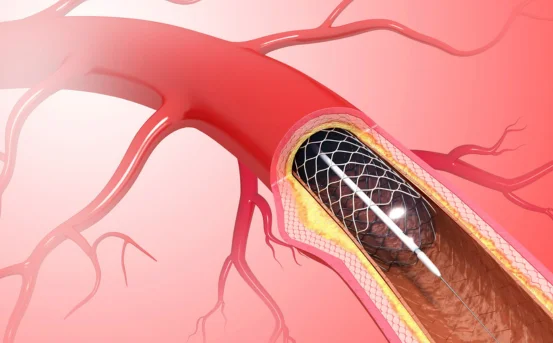Prostatitis, also known as prostate inflammation or swelling, is an inflammatory condition of the small prostate gland located beneath the bladder. This walnut-sized organ plays a vital role in the male reproduction system, producing seminal liquid that feeds and transports the sperm. Inflammation of the prostate can cause a variety of symptoms that may affect sexual and urinary function.
The diagnosis of prostatitis cannot be generalized. It is a term used to describe several conditions that each have their own symptoms, causes and treatment options. Some forms of prostatitis are caused by bacterial infection, while others occur without an identifiable infection. Understanding the different forms of prostatitis will help you to diagnose it accurately and receive effective treatment.
Prostatitis Types
What is Prostatitis? Understanding Its Impact
The National Institutes of Health classifies prostatitis in four major categories.
- Acute Bacterial Prostatitis :- It is the most severe but least common form of prostatitis. This type of prostatitis usually develops abruptly due to a bacterial infections and requires immediate medical attention. The bacteria can come from an infection of the urinary system or enter the prostate via the urethra.
Common symptoms are high fever, chills and pelvic pain. Other symptoms include difficulty emptying your bladder, painful urination and high fever. Untreated, it can cause serious complications, such as sepsis and abscess.
- Chronic Bacterial Prostatitis :- Contrary to the acute form of prostatitis, chronic bacterial prostatetitis tends not to develop suddenly and can persist for many months or years. This condition is caused by persistent bacterial infections. Pelvic discomfort, frequent urination and a low-grade temperature are some of the symptoms. It is less severe than acute bacterial prostateitis, but its long-term effects can be significant.
- Chronic Pelvic Pain Syndrome/Chronic Prostatitis (CP/CPPS) :- It is the most complex and common type of prostatitis. This condition is characterized by persistent pelvic or perineal discomfort lasting three months or longer. Unlike the bacterial form, CP/CPPS is not associated with any detectable bacterial infections. The exact cause of CP/CPPS is unknown. However, it could be caused by nerve damage, inflammation, autoimmune reactions, or psychological stress.
The symptoms include pain after or during ejaculation and urgency or frequency in the urinary system. Treatment can be difficult and multidisciplinary because the cause of this condition is not known.
- Asymptomatic Prostatitis :- This type is characterized by the absence of symptoms. It is often discovered by accident during the evaluation of other medical conditions such as infertility, elevated PSA levels or infertility. It does not need to be treated, but it can be monitored in order to prevent complications.
Prostatitis :- Causes and Treatment
Causes of prostatitis can vary according to the type. The most common cause of bacterial prostatitis is bacterial infection that has spread from the urinary system or rectum. Most commonly, Escherichia coli(E. coli), is the culprit.
The exact cause of non-bacterial prostatectitis is harder to determine. Potential contributing factors include
-
Autoimmune disorders
-
Pelvic floor muscle dystrophy
-
Damage to the nerves in the pelvic region
-
Stress physical or emotional
-
Chemical irritation (e.g. from urine refluxing in the prostate)
Diagnose and treatment can be more difficult in many cases, particularly with CP/CPPS.
Prostatitis Symptoms
The symptoms of prostatitis can vary depending on its type and severity. The most common symptoms include:
-
Pain or burning sensation during urination (dysuria)
-
Difficulty starting urination or maintaining it
-
Nocturia is characterized by a frequent need to urinate at night.
-
Perineum, pelvis, lower back or pelvic pain
-
Ejaculation painful or dysfunctional?
-
Flu-like symptoms in acute bacterial prostatitis
-
Blood in urine and semen is rare.
These symptoms may be intermittent or constant and can have a major impact on your daily life and emotional wellbeing.
Diagnosis for Prostatitis
For effective treatment, a correct diagnosis is crucial. A detailed medical history, physical examination and a digital rectal examination (DRE) are usually the first steps taken by healthcare providers.
Other diagnostic tests include:
-
Urinalysis & urine culture
-
Tests to detect signs of inflammation or infection
-
Prostate fluid analysis
-
Imaging studies, such as ultrasound or MRI in complicated cases
-
Urodynamic Testing (to assess bladder functionality)
Some symptom tracking tools and questionnaires are used to track the severity and progress of symptoms.
Treatment options for Prostatitis
The treatment for prostatitis is dependent on its underlying cause as well as the type.
Acute and Chronic Bacterial Prostatitis
-
Antibiotics :- These antibiotics are prescribed as the main treatment for 2-6 weeks.
-
NSAIDs :- are effective pain relievers.
-
Alpha blockers :- These drugs relax the muscles surrounding the bladder and prostate to improve urine flow.
For Chronic Pelvic Pain Syndrome/Chronic Prostatitis:
-
Multimodal Therapy :- This is a treatment that often combines medication, physical therapy and psychological support with lifestyle changes.
-
Pelvic Floor Physical Therapy :- Helps to relieve muscle tension and discomfort in the pelvic area.
-
Muscle relaxants and anti-inflammatory medications :- Can be prescribed for symptoms.
-
Techniques for stress management :- Yoga and meditation as well as cognitive behavioral therapy (CBT), can be used to manage chronic pain conditions.
- Asymptomatic Inflammatory prostatitis :- Normal treatment does not require any special care, although regular monitoring is recommended.
Prostatitis :- How to live with it
Chronic prostatitis can have a negative impact on both your physical and mental health. It can affect work, relationships and quality of living. It is therefore important to have a holistic and supportive approach. To avoid complications, men with symptoms should consult a doctor as soon as possible.
In order to manage prostatitis successfully, patient education, emotional support and open communication with health care providers are key.
Conclusion
The condition of prostatitis, which is complex and misunderstood by many men, especially those between 20 and 50 years of age, affects an important number of males. Prostatitis, whether caused by an infection or another underlying factor, can have a profound effect on sexual and urinary health.
A timely diagnosis and a customized treatment plan are crucial for successful management. Some cases can be resolved quickly with antibiotics. Others may require multidisciplinary treatment, physical therapy and stress reduction. By increasing awareness of prostatitis, more men will recognize its symptoms and seek medical attention. This can improve their health and quality-of-life.























